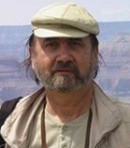
Plenary Lecture
Learning Sample Generation Using Computational Intelligence Techniques to Improve Pattern Classification Accuracy

Professor Victor-Emil Neagoe
Faculty of Electronics, Telecommunications, and Information Technology
Polytechnic University of Bucharest
Romania
E-mail: victoremil@gmail.com
Abstract: In order to obtain a robust pattern classifier, the training set needs to contain a sufficient amount of samples to adequately represent the problem. Unfortunately, often the available set of vectors is too small to completely describe the partition or it contains low informative samples; in these cases one can have an underrepresentation yielding to poor classification results. The traditional way to cope with the small training set problem is interpolation, also known as noise injection. On the other side, in order to optimize the performance of classifier, the training set should be as small as possible by avoiding redundant samples and should include only most informative patterns. The problem is similar to feature selection for pattern recognition.
At the same time, enormous success has been achieved during the last decade through modeling of biological and natural intelligence, resulting so-called “nature-inspired intelligent techniques”, which are included under the umbrella of Computational Intelligence (CI). This is why our two approaches of improving the quality of training for a given supervised classifier are based on two CI branches: Artificial Neural Networks (ANN) and Swarm Intelligence (SI).
On the other side, modern environmental remote sensing satellite imagery, due to their large volume data, offers greater challenges for automated image analysis and this is why we have tested the proposed models for multispectral imagery classification.
This lecture presents an original CI approach for improving performances of the supervised classifiers using either an SI technique for learning sample selection or an ANN model for generation of synthetic samples to optimize the training set. First proposed method called Ant Colony Optimization for Learning Sample Selection (ACO-LSS) uses ACO model to select the significant samples from a given set of labeled vectors to optimize the training quality of a supervised classifier. The second proposed model called Virtual Sample Generation by Concurrent Self-Organizing Maps (VSG-CSOM) is based on the idea of improving the learning set of a supervised classifier by substituting the initial labeled sample set with the „virtual” samples generated with a system of concurrent SOMs. The proposed models are implemented and evaluated for a LANDSAT 7 ETM+ image using a Support Vector Machine (SVM) classifier.
Brief Biography of the Speaker: Victor-Emil I. Neagoe was born in Pitesti (Arges county, Romania) on May 31, 1947.From 1965 till 1970 he attended the courses of the Faculty of Electronics and Telecommunications, Polytechnic Institute of Bucharest, Romania. In 1970 he received the M.S. degree of diplomat engineer in electronics and telecommunications as a head of his series (with Honor Diploma). He also obtained the Ph.D. degree in the same field from the same institution in 1976 as well as the Postgraduate Master degree in Applied Mathematics and Informatics from the Faculty of Mathematics, University of Bucharest in 1981.From 1970 till 1976 he has been an Assistant Professor at the Faculty of Electronics and Telecommunications, Polytechnic Institute of Bucharest, branches: Information Transmission Theory, Television, and Applied Electronics.From 1978 till 1991 he has been a Lecturer at the same Institute and Faculty, courses: Information Transmission Theory and Applied Electronics.Since 1991 he has been a Professor of the Polytechnic University of Bucharest, Romania, where he teaches the following courses: pattern recognition and artificial intelligence; digital signal processing; computational intelligence; data mining. He has been a Ph.D. supervisor since 1990. Prof. Neagoe has published more than 120 papers; his research interest includes pattern recognition, nature inspired intelligent techniques (computational intelligence), classification of multispectral and hyperspectral remote sensing imagery, emotion recognition from facial images, biometrics, sampling theory, image compression.He has been a Member of IEEE since 1978 and a Senior Member IEEE since 1984.Prof. Neagoe has been included in Who’s Who in the World and Europe 500 . Particularly, he has been recently included in Who’s Who in the World 2011and 2012 (28thand 29thEditions) as well as in Who’s Who in Science and Engineering 2011-2012 (11th Edition).